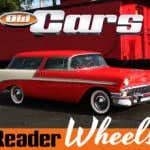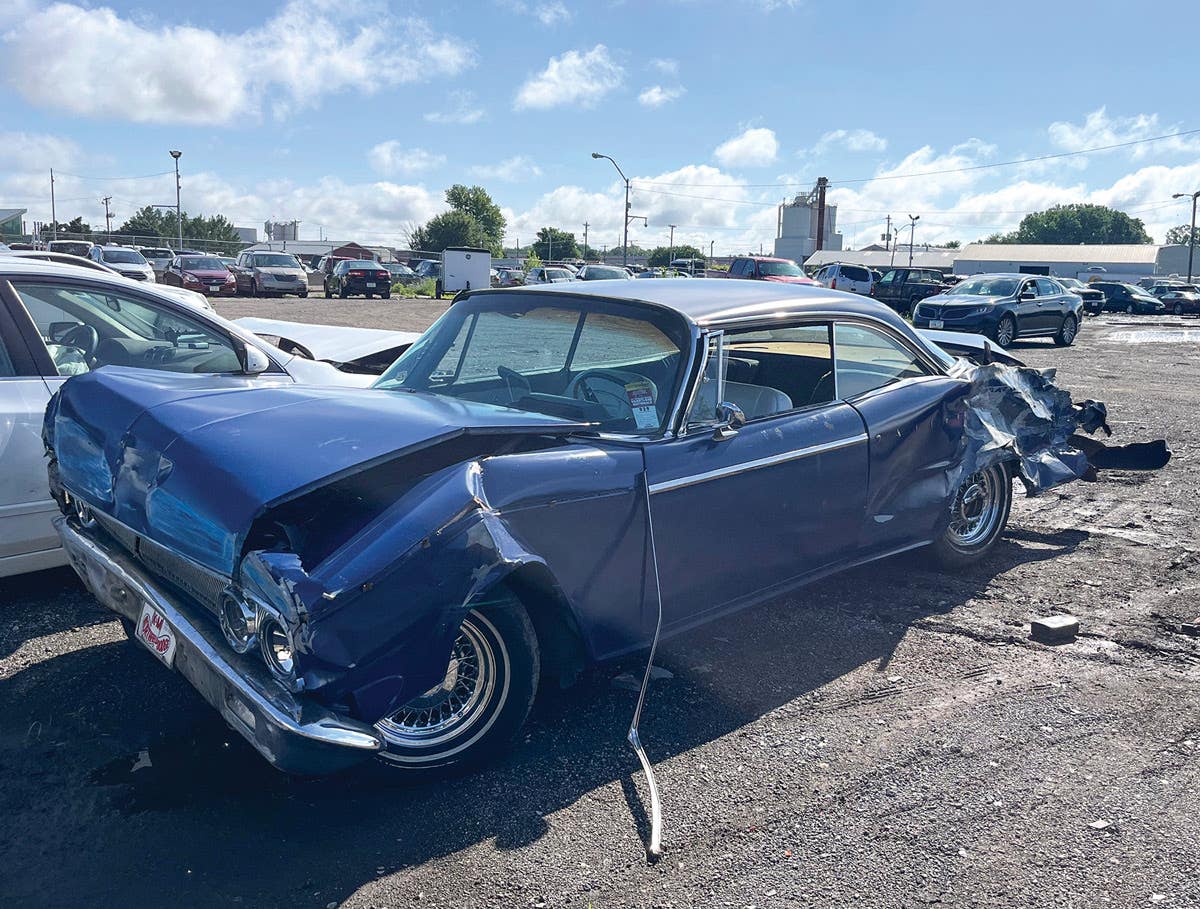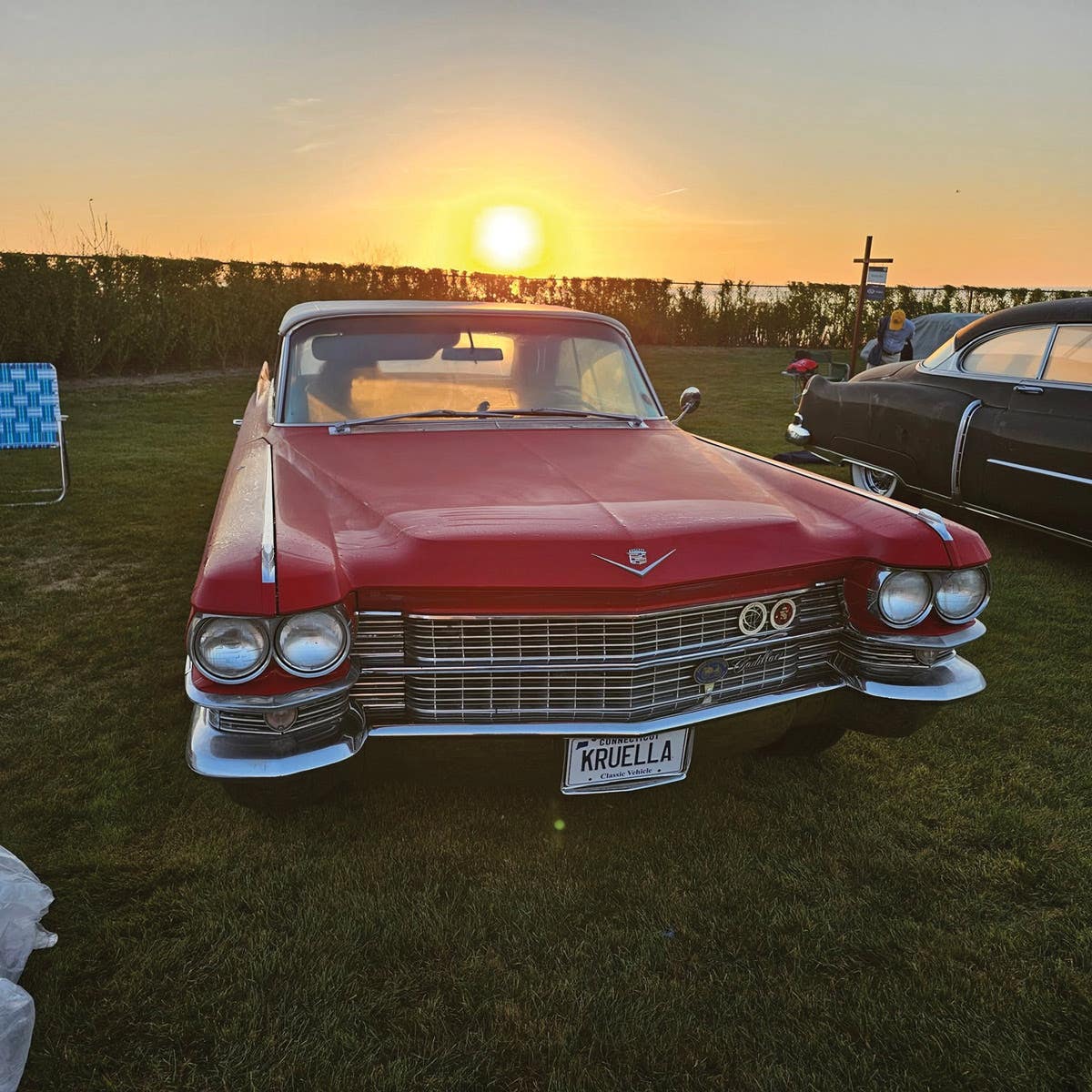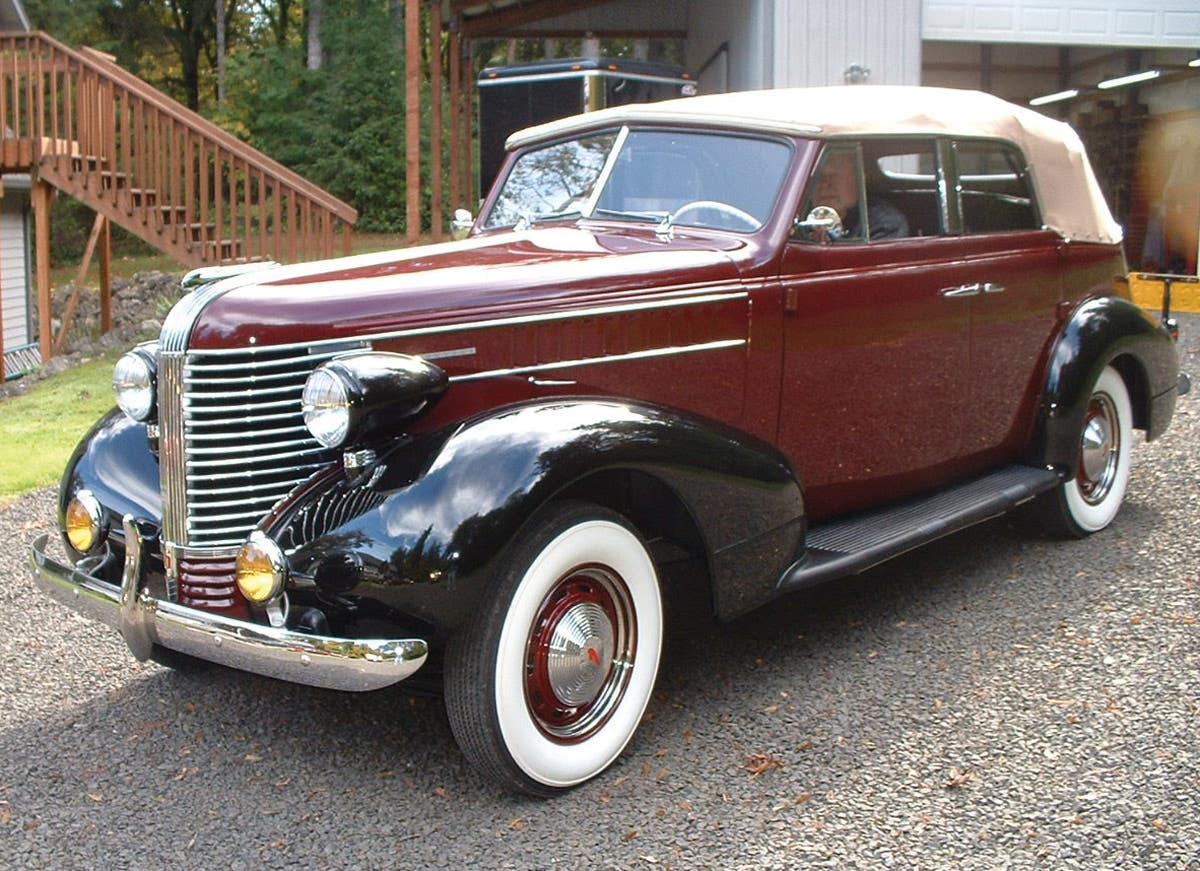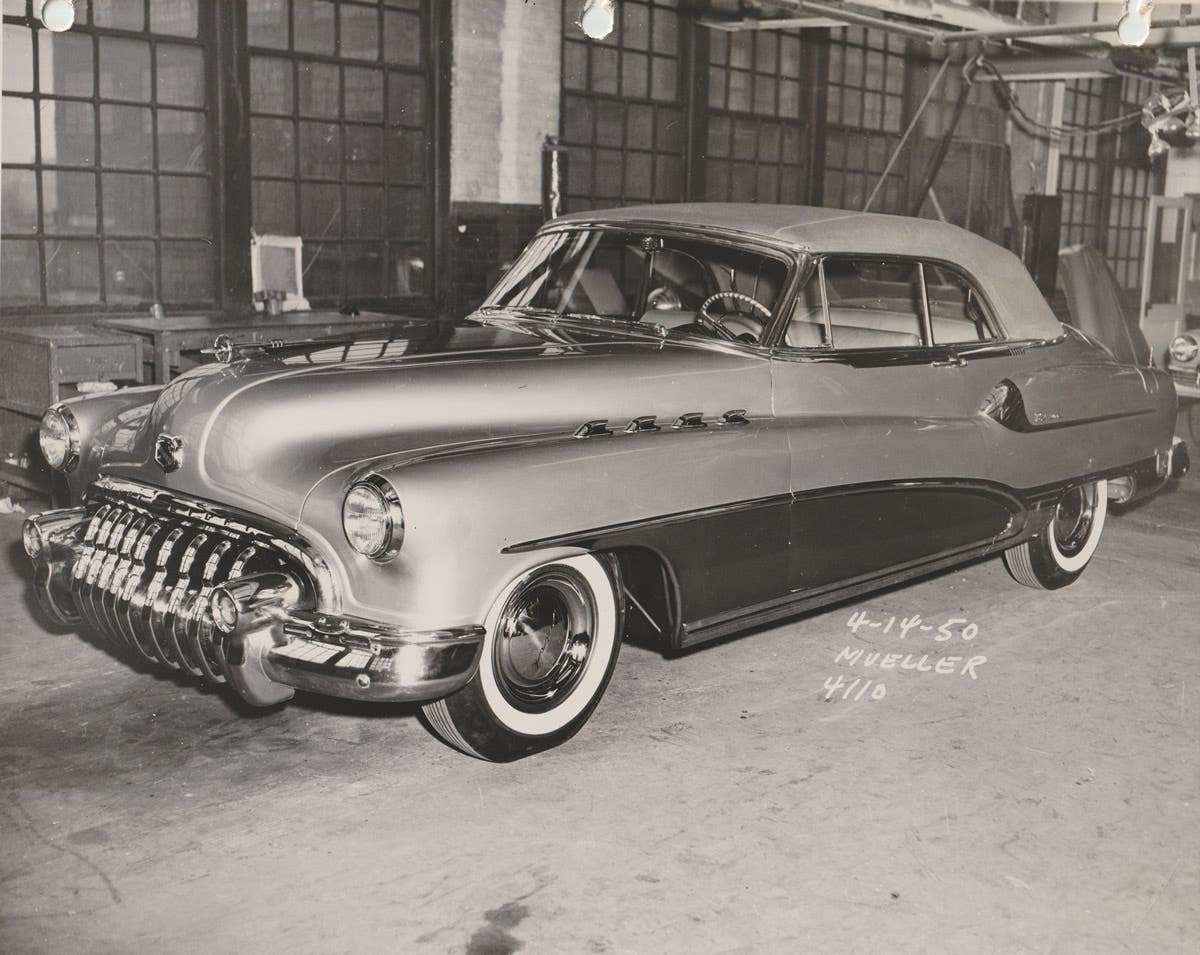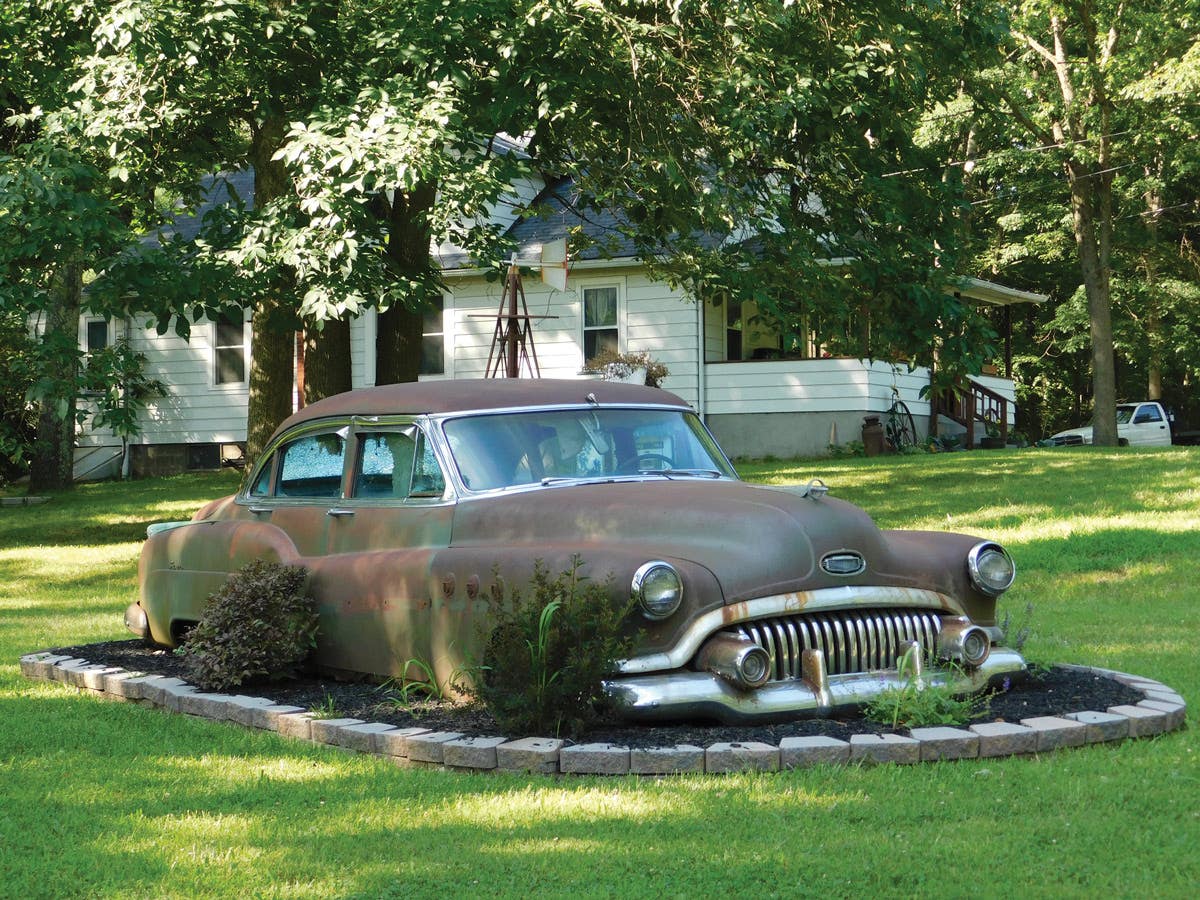Until his passing in January 2025, Joe Floyd really liked Flathead V-8-powered Fords built from 1932-1953. However, he really loved the 1936 Ford V-8 in all shapes and guises so much so that he built a collection of 18 concours-quality examples.
Despite his affinity for stock 1936 Fords, Joe bought the featured half-ton 1936 Ford truck believing it had a 1937 Ford engine. Although a stickler for originality, he really liked the truck and planned to restore it anyway.
The design and mechanical parts of the Ford truck were essentially identical from 1935 to 1937. Most of the differences between model years could be found in the interior trim and upholstery, with the leather upholstery later offered in brown and dark gray. There were also a few minor body and mechanical updates to the Ford V-8 through the 1935-’37 generation — one of them leading to Joe’s assumption the truck had the wrong engine.
This Washington Blue 1936 Ford pickup was found by Joe during an Early Ford V-8 Club of America regional event at Albuquerque, N.M., in early 2000. A member offered the truck there after acquiring it from his father. Upon inspecting the truck, Joe noticed the water pumps were moved from the front of the engine to the sides, and the fluid flow was reversed for better cooling, a feature associated with 1937-and-later Ford Flathead V-8s. Years later, Joe eventually discovered that Ford had started putting engines designed with the improved cooling feature in its 1936 trucks late in the model year, prior to the start of the 1937 Ford truck production run. As was the case with Joe’s truck, late-1936 models received the early upgrade prior to the introduction of the new ’37s.
Nuances of 1935-1937 Ford trucks
The featured ’36 Ford is a light-duty half-ton Model 67-830 pickup built on the standard 185-inch wheelbase. It’s powered by the 221-cid Flathead V-8 that produced 85 hp.
By 1936, Ford had produced 3 million trucks and was way ahead of the competition in sales.
The 1935 redesign for the Ford truck line brought a more curvaceous grille, skirted fenders and a laid-back windshield, making trucks closer in appearance to contemporary Ford passenger cars.
The 1935 Ford pickup cab was taller and more defined than in previous generations. The cabs were no longer bolted together using wood for a sub-structure. They were a one-piece cab more structurally built from steel. The visor on the cab disappeared for 1935, as would the overall squareness of the cab design. The half-ton pickup’s bed increased to 69 inches of load length for 1935, and the wheelbase was stretched to 112 inches. In 1935, the spare tire was mounted on the side of the bed for the first time, a tradition that Ford would continue for 14 years.
Late in 1936, the water openings in the heads moved from the front of the engine to the center of the heads. Freeze Frame Image LLC
For those who think that a sliding back glass window on a truck cab was a product of the ’70s or ’80s, think again. It was introduced as an option in 1935, although very few farmers saw the value, so in 1947 the idea was dropped.
1936 was the first year for the wide five-lug-wheel pattern. This was used through 1939, when juice brakes hit the scene.
The front fenders on the 1935 pickup had a hole cut in them for the bumper arms to protrude through. Body shops and dealerships of the day started to complain to Henry Ford that the bumper arms had to be removed just to make a simple fender change. This issue would be remedied in 1936, with the lower part of the fender being removed to allow easier fender removal. The fender openings on the half-ton pickup were designed to accommodate the 600x16 tire that came on the truck. These fenders are interchangeable between the 1935-1937 half-ton Ford pickups. The bigger trucks share the same style fender, but the opening is for a 20-inch wheel and tire. Also, the inner fender braces will not interchange between big trucks and half-ton pickups.
The most noticeable exterior difference from 1935-’37 is in the hood sides. From 1935 to 1936, the large V-8 emblem was moved from the center of the cooling louvers in ’35 to ahead of the louvers in ’36, then back to the center for ’37.
The cabs, although interchangeable, do have some slight differences. The most obvious is the A pillar configuration. In 1935, the cab has a more pronounced body line right below the windshield. Another subtle difference is a small indentation in front of the door, on the cowl. The 1936 body line almost looks like the door was opened too far, but it was actually designed that way.
Inside the cab, one of the more noticeable differences is the removable garnish moldings on the 1935 model. In 1936, the garnish moldings and the door pulls became part of the inner door structure. On the 1935, there are screws to remove the moldings.
The beds, tailgates and running boards are interchangeable from 1935-1937. However, the Ford logo stamped in the tailgate changed for the ’37, and the bed is approximately 10 inches longer that model year. The latter difference all takes place behind the rear axle.
Not your average Joe
Joe Floyd walked a few interesting paths during his lifetime and eventually found himself in the automobile restoration stage.
He began working as an usher at a movie theater and helped in his father’s Hudson dealership, then he worked part-time at a local Cadillac/
Pontiac dealership where he installed radios in new Pontiacs.
Life soon became serious and Joe headed off to college and engineering school. After earning his engineering degree, his first career move was developing control systems for the Titan missile system. Later, he worked at an electric power company in Colorado where early cable television systems were being constructed. Finally, he ended up running a telecommunications company that served four Midwestern states.
it was mounted in the middle of the panels in 1935 and 1937. Freeze Frame Image LLC
Then, one day, another life stage crept up on him when his wife asked, “What are you going to do when you retire?”
That was something that Joe hadn’t really given much thought. After thinking about it for a while, he recalled being in high school, a period in which he and his friends were always working on their Fords to make them go faster — and they did!
Joe originally had a 1946 Ford Tudor, but always had a fondness for the 1936 Ford and its great styling. The following week he told his wife, Elaine, “Well, this is what we’re going to do. I would really like to find and restore a 1936 Ford.” It was the start of a decades-long journey that evolved from buying and restoring Ford V-8s to becoming an active part of the Early Ford V-8 Foundation Museum in Auburn, Ind. Today, many of Joe’s cars are displayed in the Floyd Motors Showroom, including the featured 1936 Ford Model 67-830 pickup truck.
Within three years of buying the 1936 Ford truck in 2000, its stunning body-off-frame restoration was completed by Straightlines Custom Restoration in Tea, S.D. The truck was originally produced with a steel floor in its pickup box, but Joe decided to have Horkey’s in Windom, Minn., make a new box with a wood floor. Joe thought it would look great and catch people’s eyes at car shows, and he was right.
The truck remained at home, in Joe’s collection, until 2019, when the Early Ford V-8 Foundation Museum in Auburn, Ind., opened Floyd Motors, which features Joe’s 1936 Ford collection of 18 vehicles. The layout resembles a period-correct dealership and includes a turnstile. Many other automobiles that were restored by Joe and his family have also found their way into Floyd Motors. Even after Joe’s passing in January of this year, the Fords have remained there as part of his legacy, just as his family wishes.
“My siblings and I encouraged dad to do something with the collection and find a permanent home for his collection of 1936 Fords,” recently recalled Joe’s son, Craig. “The Early Ford V-8 Foundation Museum was near and dear to his heart, and it wasn’t a hard sell.”
Sage Ford Advice
Joe’s interest in 1936 Fords is so strong, he wrote the book “Floyd Collection” featuring his ’36 Fords, which was published in 2018 by the Early Ford V-8 Foundation Museum. In the book, Joe included an interesting section on collecting Fords titled, “Some Things I Learned Along the Way.” The following excerpt offers insight into his interest in 1936 Fords, and what he learned about them in his years of studying them:
You cannot start a project to locate and restore all the models of the 1936 Ford automobile without taking the time to understand what the Ford Motor Car Company was like in the 1930s. At that time, it was still privately owned. Even though Edsel Ford was president, it was still Henry’s company. Henry Ford was the last industrialist who, with a stroke of a pen, could stop every production line in his whole company. Production that year was 791,812 cars and trucks.
Henry Ford was known as the inventor of the Model T Ford that put Americans on wheels. His real genius was the development of the assembly line process.... This process allowed his company to produce more quantity and better quality automobiles at a lower cost. This mass-production method allowed us to win World War II by out-producing the Germans and Japanese 10 to 1 in tanks and airplanes.
In that era, Henry Ford was like Warren Buffet today. When he talked, everybody listened. In 1936, Henry Ford was the first to declare the Great Depression to be over.
The very thing that made the production line possible also made it easier for us to restore so many cars. Starting in 1932, virtually every engine and drive line was identical even though the body was different. When making 800,000 cars, they only had to cast one steering arm for all those cars.
When we started locating parts, it was a real challenge. The internet and eBay-licensed reproduction vendors were just starting to come onto the scene, so junk yards and swap meets were our primary source.
One day, we drove to northern Minnesota to purchase a parts car. We had to cut a 4-foot tree growing out of the middle of the car before we could load it on our trailer. Parts from the first parts car were used all over in our collection. It was Henry’s genius that made it possible for us to bring back to life so many models of the 1936 Ford.
Ford relied on three auto body builders for his cars: Briggs, Budd and Murray. The design of the 1936 car was designed by Bob Kota, a designer for Briggs Manufacturing Company. In many respects, it was a facelift from the 1935 model. Some of the fenders on the open cars do not fit the closed cars even though they look the same.
Did you ever look at the grille on the ’36 Ford and wonder what the hole near the bottom was for? If you think it looks like a hole for a hand crank, you are correct, but everyone knows you cannot hand crank a V-8 engine, because of the location of the distributor. Even so, the hole was there in 1932 through the 1937 model Fords.
In 1928, when Ford came out with his Model A, it had a very reliable L-head 201 cu.-in. engine developing 40 hp. This was Ford’s standard power plant until 1932, when the V-8 was introduced. The four-banger, as it was called, developed a very loyal following, especially in the rural areas in North America. Some customers were not about to switch to some newfangled engine when the four-bangers were so reliable. Thus, you could order any Ford car or truck though 1937 with the four-cylinder engine. There are no production records showing how many four-bangers were sold during that time.
By 1936, Ford was using very little wood in its cars. Most of the other car makers were still used to reinforcing the doors and side body panels. However, if you look closely under the cars, you can see some wood reinforcement under the front and rear floor panels. The four wood pieces were a little over 1 inch square and about 14 inches long. These wood reinforcement pieces were exposed to all the road grime and grit as were the underside of the metal floors on the car.
When we would start to dismantle the body and remove the floor panels that were usually rotted, the wood pieces on the floors were still intact. I got to wonder: How could wood outlast the metal floor? Later I found out that it was ironwood, from the upper peninsula of Michigan, where Ford had its forests.
More than a decade ago, I traveled to the town of Ironwood, Michigan, and asked about the wood. I was told, “If you find one of the ironwood trees, do not try and cut it down. It is the densest wood grown in North America.” Leave it to Henry to find the right wood for the cars.
Sometimes I wondered why the 1935 and 1936 Ford cars looked almost the same, and the 1937 was such a radical change. We do know that Ford was relying on the designers at Briggs Manufacturing Company to come up with the body designs for those and prior years. It made me wonder even more when I looked at the pictures of other cars of that era. They had flowing fenders, enclosed headlamps, trunks and a trim rear view.
In my opinion, Ford did not want to scare off its loyal customers, so it gave them a slow transition from the classic Model A designs carried over into the ’32 to ’34 models. My other theory is that Edsel Ford was way more conscious of body design than Henry and we were beginning to see his influence in the company. No matter which theory you believe, I think the 1936 Ford automobile is the neatest looking prewar automobile Ford has ever made.
Early Ford V-8 Foundation Museum
2181 Rotunda Drive
PO Box 284 (Mailing)
Auburn, IN 46706
260-927-8022
fordv8foundation.org
Love truck stories? Here are a few more articles for your reading enjoyment.


